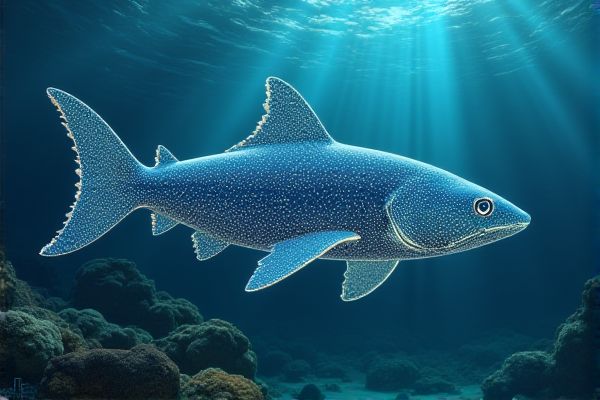
Artificial intelligence is revolutionizing ocean life studies by enabling researchers to analyze vast amounts of data collected from marine environments. Machine learning algorithms assist in identifying patterns in animal behavior, migration routes, and population dynamics, leading to better conservation strategies. Satellite imagery combined with AI techniques allows for monitoring of habitats and tracking changes due to climate change and human activity. This technological advancement is essential for making informed decisions to protect marine ecosystems and sustain biodiversity.
AI usage in ocean life studies
Marine Species Identification
AI technology has the potential to significantly enhance marine species identification by analyzing vast amounts of underwater imagery and acoustic data. For instance, machine learning algorithms can improve the accuracy of species recognition tools used by researchers at institutions like the Woods Hole Oceanographic Institution. This capability may allow scientists to identify previously unnoticed species and monitor population changes over time. Improved identification could lead to more informed conservation strategies, ultimately benefiting ocean ecosystems.
Oceanographic Data Analysis
AI enhances ocean life studies by analyzing vast datasets collected from marine environments. Its application in oceanographic data analysis allows researchers to identify patterns and behaviors of marine species more efficiently. For instance, using machine learning algorithms, scientists can process satellite imagery to monitor coral reef health. The potential advantages include improved resource management and better understanding of ecological changes.
Underwater Drone Coordination
AI technology can enhance underwater drone coordination in ocean life studies by improving data collection and analysis. With advanced algorithms, drones can efficiently map marine habitats and monitor ecosystems, potentially revealing critical insights into species behavior and distribution. For instance, institutions like the Ocean Exploration Trust may benefit from AI's ability to automate the processing of vast amounts of data collected during deep-sea explorations. This integration could lead to more accurate assessments of ocean health and better conservation strategies.
Habitat Mapping and Monitoring
AI can enhance ocean life studies by analyzing vast amounts of data collected from underwater sensors and remote sensing technologies. Habitat mapping and monitoring can benefit from machine learning algorithms that identify patterns and changes in ecosystems, such as coral reefs and seagrass beds. These advancements may improve conservation efforts by predicting the impact of climate change on marine habitats. Institutions like the Oceanographic Institute can leverage AI to develop more effective management strategies for marine biodiversity.
Acoustic Signal Interpretation
AI technologies can enhance the interpretation of acoustic signals in ocean life studies, potentially improving species identification and behavior analysis. For example, researchers at the Scripps Institution of Oceanography have utilized machine learning algorithms to differentiate between various marine animal sounds. This approach may lead to more accurate assessments of biodiversity and ecosystem health. The application of AI in this field could open up new avenues for conservation efforts and resource management in marine environments.
Ocean Current Prediction
AI can significantly enhance ocean life studies by improving the accuracy of ocean current predictions. Researchers at institutions like the Scripps Institution of Oceanography are exploring machine learning models to analyze vast datasets, which could lead to better understanding of marine ecosystems. This technology allows for the detection of subtle changes in ocean conditions, potentially benefiting fisheries and conservation efforts. The chance to harness AI in this field opens up possibilities for more effective management of ocean resources and biodiversity.
Climate Change Impact Analysis
AI usage in ocean life studies presents potential advantages, particularly in analyzing the impact of climate change on marine ecosystems. Machine learning algorithms can process vast amounts of data from sensors and satellites, helping researchers identify trends and anomalies in ocean temperatures and species distribution. For example, studying climate effects on coral reefs can reveal critical insights into their resilience. The integration of AI tools offers a greater chance of developing effective strategies to mitigate negative impacts on ocean biodiversity.
Marine Pollution Detection
AI can significantly enhance ocean life studies by enabling more accurate data analysis and real-time monitoring of marine ecosystems. For instance, machine learning algorithms can identify patterns in fish populations, helping researchers understand species behavior and distribution. In marine pollution detection, AI can process vast amounts of satellite imagery to spot oil spills or plastic waste with greater efficiency. This technological advancement carries the potential for improved conservation efforts and informed policy-making.
Fisheries Management Optimization
AI has the potential to enhance ocean life studies and optimize fisheries management by analyzing vast datasets on marine ecosystems. For instance, machine learning algorithms can predict fish population dynamics, improving decision-making for sustainable fishing practices. The integration of AI tools may lead to more precise assessments of stock health, reducing overfishing risks. Implementing these technologies can offer significant advantages for institutions like the National Oceanic and Atmospheric Administration (NOAA) in managing marine resources effectively.
Biodiversity Conservation Strategies
AI technology offers the potential to enhance ocean life studies by analyzing vast datasets on marine species and ecosystems. For instance, machine learning algorithms can help identify patterns in fish populations that inform biodiversity conservation strategies. This approach could lead to more effective management of marine protected areas, potentially improving the overall health of ocean biodiversity. Integrating AI with tools like satellite imaging may also increase the chances of successful interventions in vulnerable marine habitats.
 techknowy.com
techknowy.com